Set Of Shaman's Necklace And Amulets Item Number: E89021-0 from the National Museum of Natural History
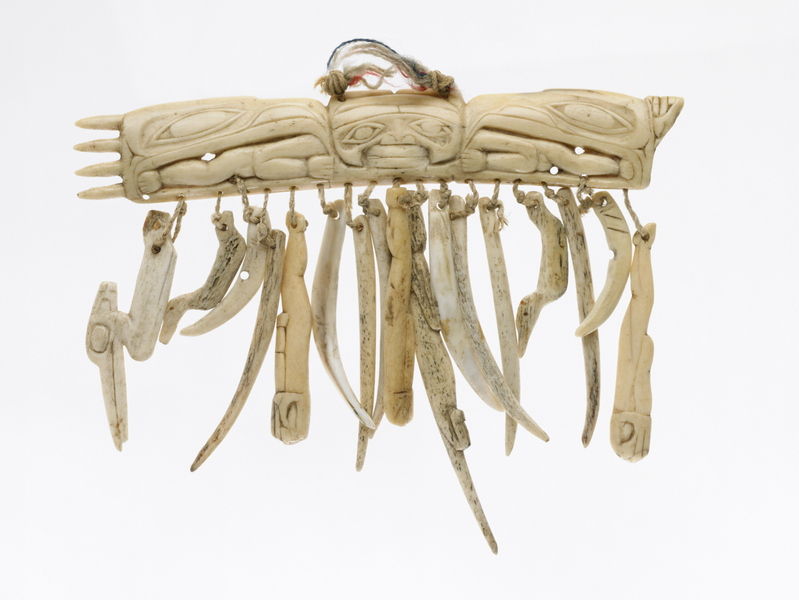

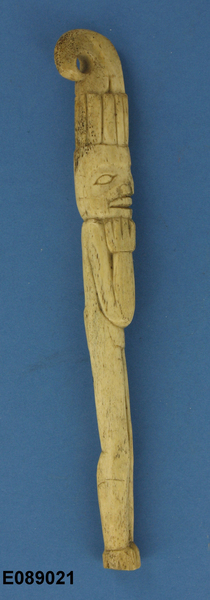
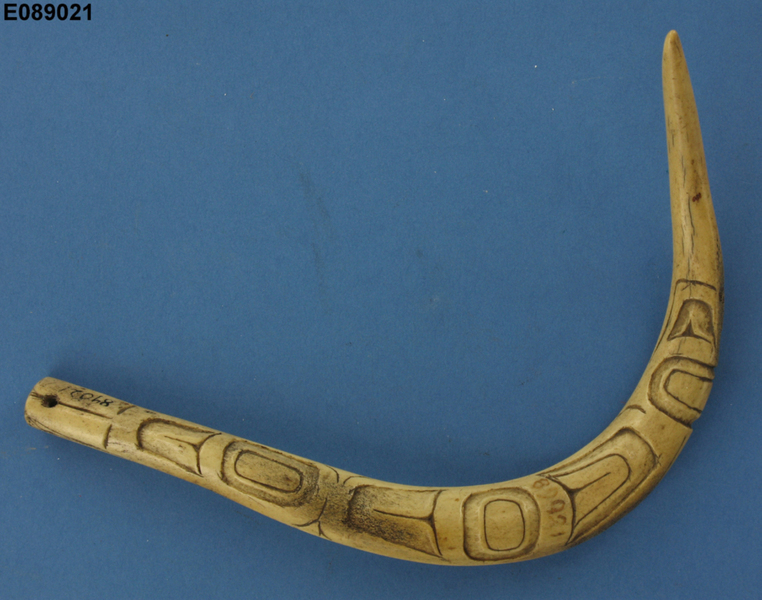

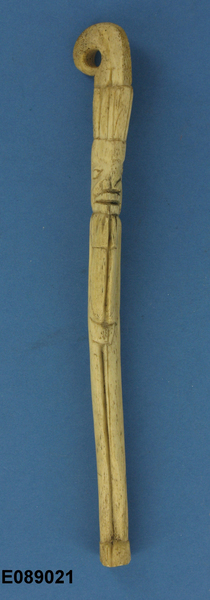
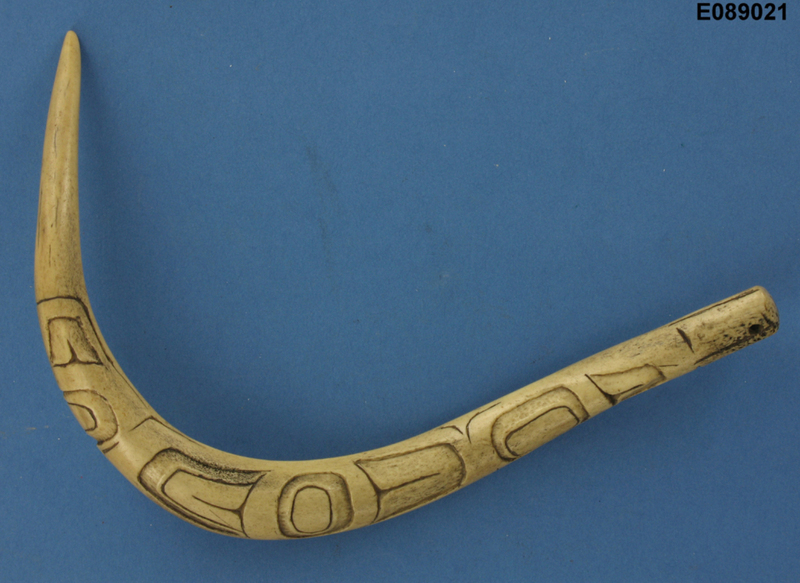

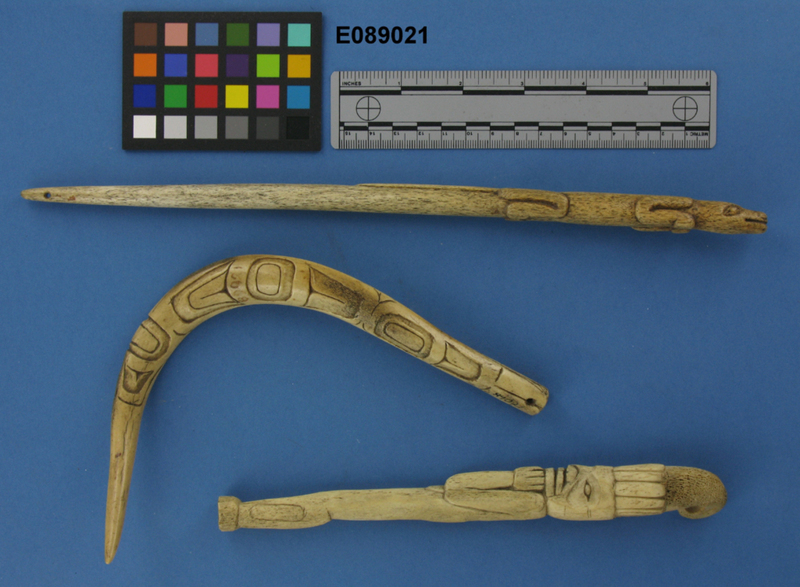
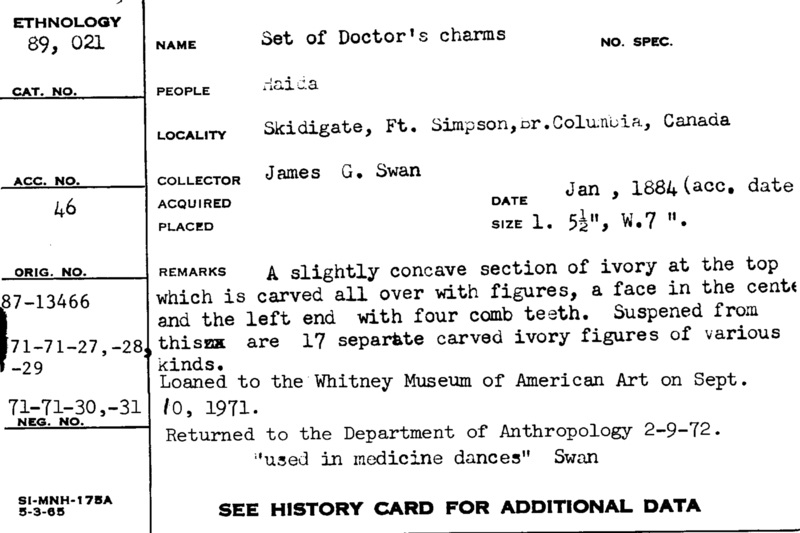
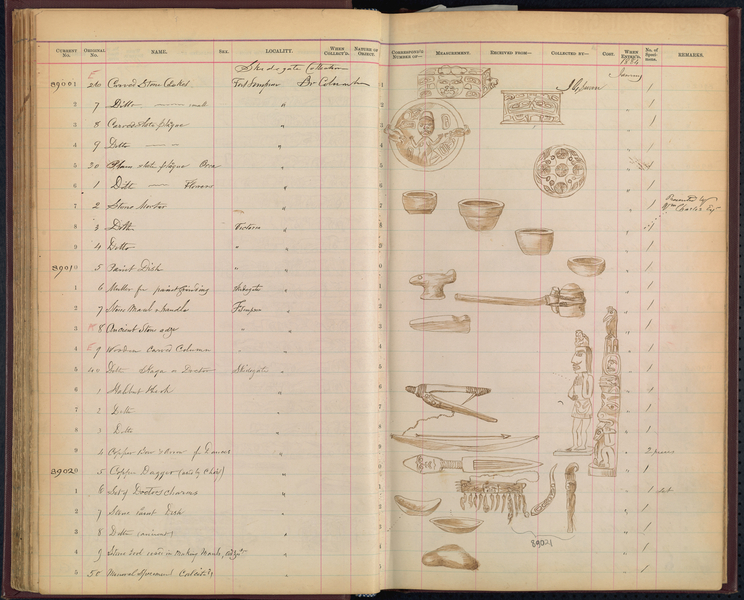
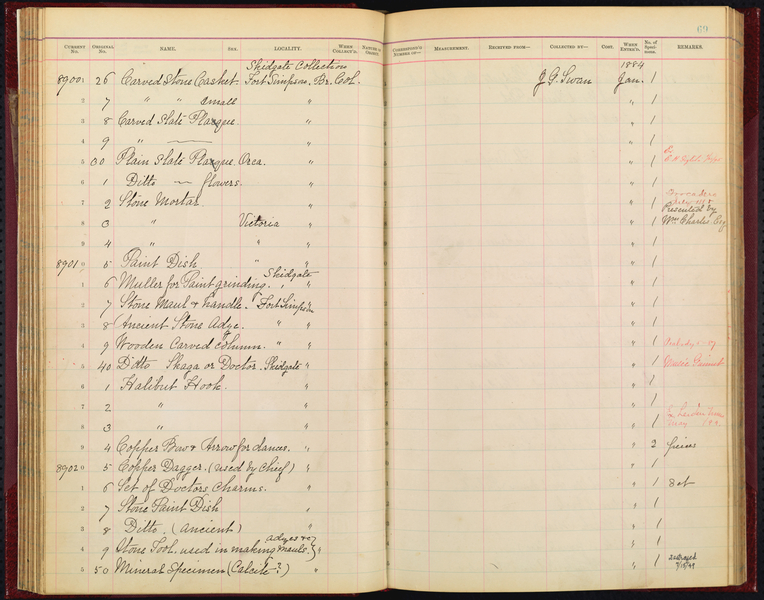
Notes
From card: "A slightly concave section of ivory at the top which is carved all over with figures, a face in the center and the left end with four comb teeth. Suspended from this are 17 separate carved ivory figures of various kinds... "Used in medicine dances" [according to] Swan"According to conservation condition reports (and the catalog card) the main amulet necklace was loaned to the Whitney Museum of American Art on Sept. 10, 1971, and returned on Feb. 9, 1972. Both the main piece and the other 3 separate amulets were loaned to the Glenbow Museum in 1987 for "The Spirit Sings" exhibition, and returned in 1988.4 pieces: shaman's necklace - a piece of carved ivory with 17 carved ivory amulets attached, and 3 additional amulets. The catalog describes the main piece with the 17 amulets, but it does not mention the additional 3 amulets. So either the amulets are misnumbered or the card is incorrect or incomplete.Shaman's necklace is on loan to the Anchorage Museum at Rasmuson Center, from 2010 through 2027. Only the large carved necklace piece with seventeen attached pendant amulets is on loan; the 3 additional amulets with this number are not on loan.Source of the information below: Smithsonian Arctic Studies Center Alaska Native Collections: Sharing Knowledge website, by Aron Crowell, entry on the large necklace piece with 17 attached amulets http://alaska.si.edu/record.asp?id=628 , retrieved 5-9-2012: Shaman's necklace, Haida. Haida shamans, both men and women, wore images of the helping spirits that came to them in dreams and visions. On this finely carved bone amulet, the heads of birds flank a human face; heron, land otter, and dog salmon, all recorded as spirit assistants in oral tradition, can be identified among the figures suspended below. Amulets worn from the neck were sometimes called head-scratchers, suggesting the purpose of the sharp points on the left side of this piece. A shaman never cut, combed, or washed his or her hair, because it was a source of spiritual strength.Listed on page 46 in "The Exhibits of the Smithsonian Institution at the Panama-Pacific International Exposition, San Francisco, California, 1915", in section "Arts of the Northwest Coast Tribes (Tools)".
Item History
- Made in Skidegate, British Columbia, Canada
- Collected by James G. Swan in Skidegate, British Columbia, Canada
- Received on December 21, 1883
What
Who
- Culture
- Haida
- Field Collector
- James G. Swan
Where
- Holding Institution
- National Museum of Natural History
- Made in
- Skidegate, British Columbia, Canada
- Collected in
- Skidegate, British Columbia, Canada
When
- Acquisition Date
- on December 21, 1883
Other
- Accession Number
- 013804